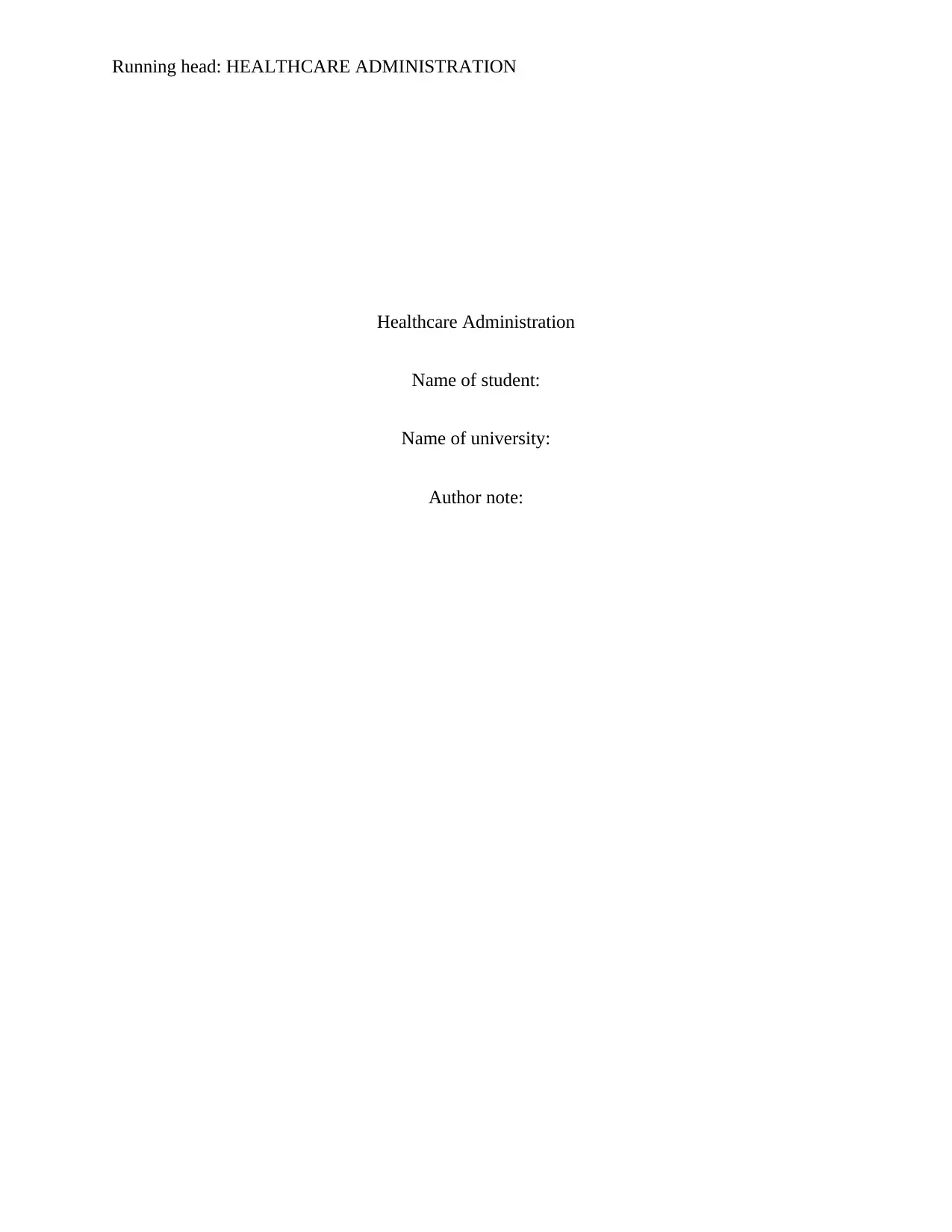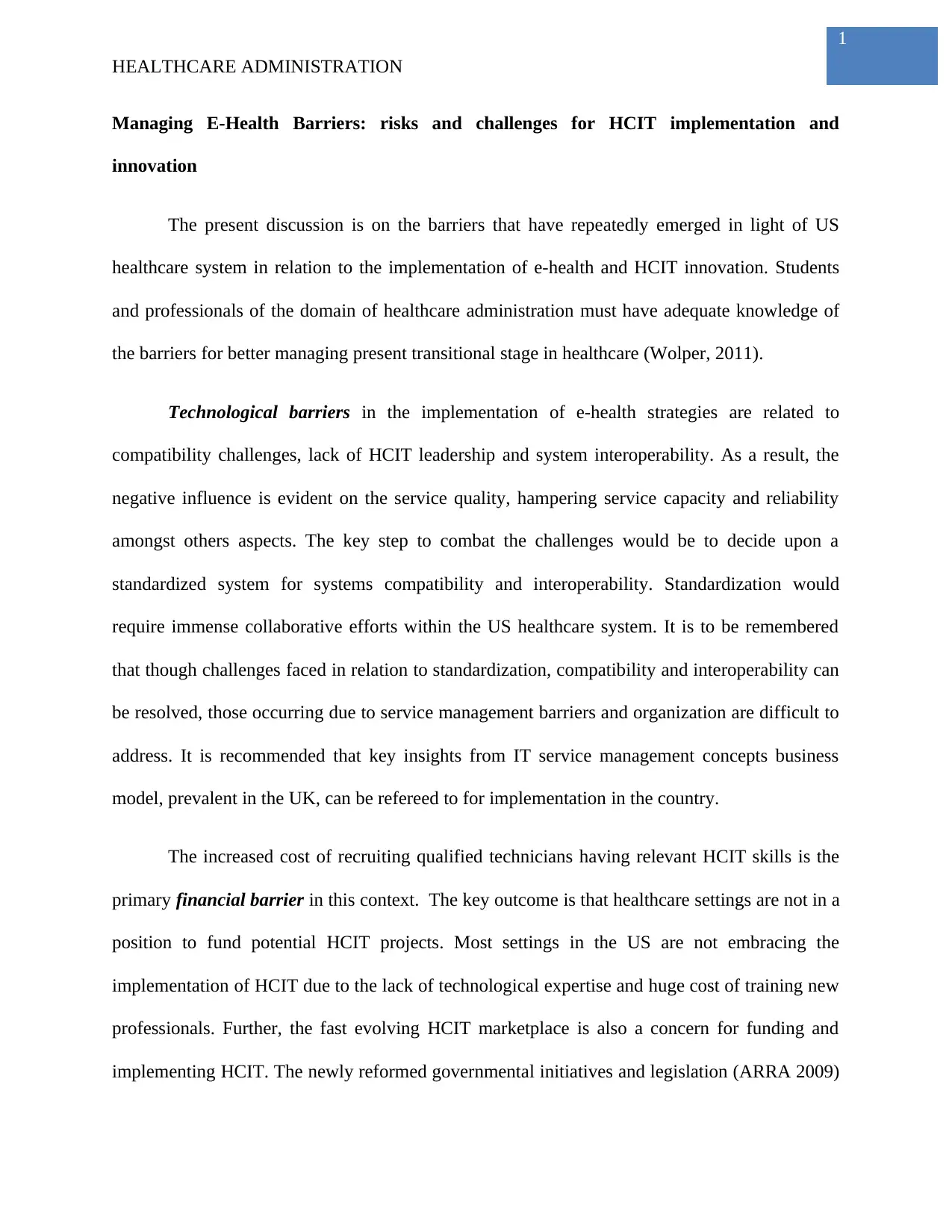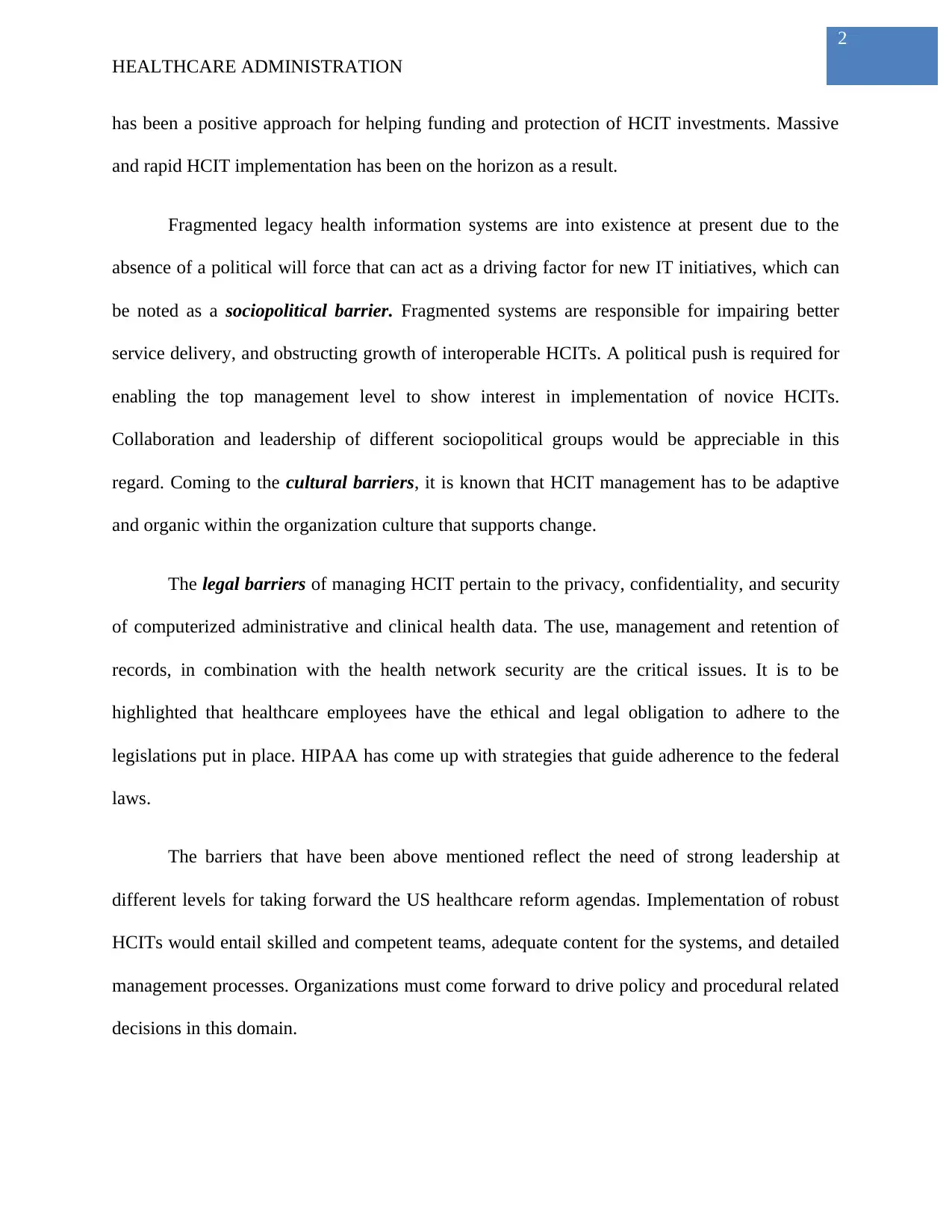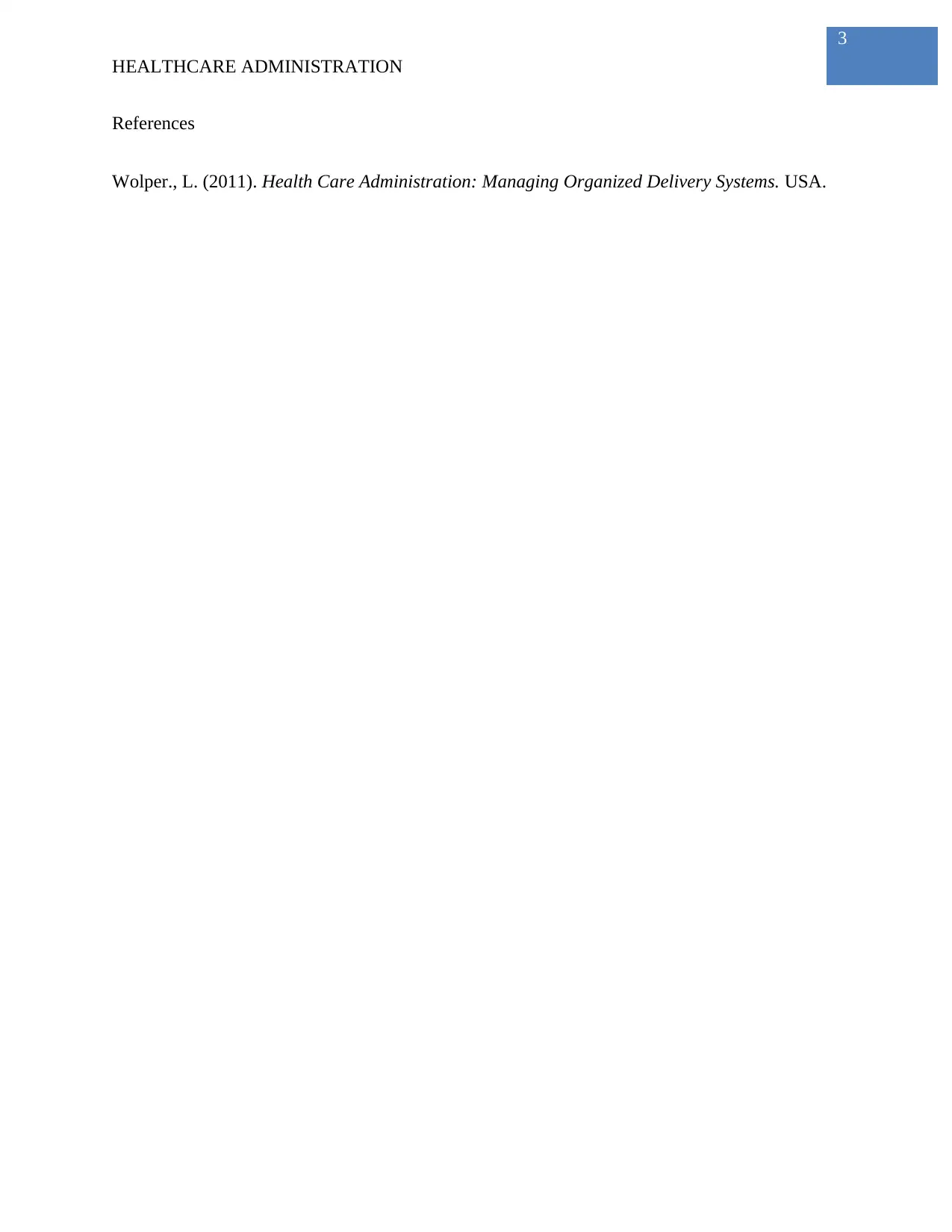E-Health & HCIT Innovation: Managing Barriers, Risks and Challenges
VerifiedAdded on 2023/06/11
|4
|639
|243
Report
AI Summary
This report discusses the barriers to implementing e-health and health information technology (HCIT) innovations within the US healthcare system. Key technological barriers include compatibility issues, lack of HCIT leadership, and system interoperability, which negatively impact service quality and reliability. Standardizing systems is crucial but requires extensive collaboration. Financial barriers arise from the high costs of recruiting qualified HCIT technicians and the rapidly evolving HCIT marketplace. Governmental initiatives like ARRA 2009 provide funding and protection for HCIT investments. Sociopolitical barriers include fragmented legacy systems due to a lack of political will, hindering service delivery and interoperability. Cultural barriers necessitate adaptive HCIT management, while legal barriers focus on data privacy, confidentiality, and security, emphasizing adherence to legislations like HIPAA. Addressing these barriers requires strong leadership, skilled teams, adequate system content, and detailed management processes to advance US healthcare reform.
1 out of 4










![[object Object]](/_next/static/media/star-bottom.7253800d.svg)